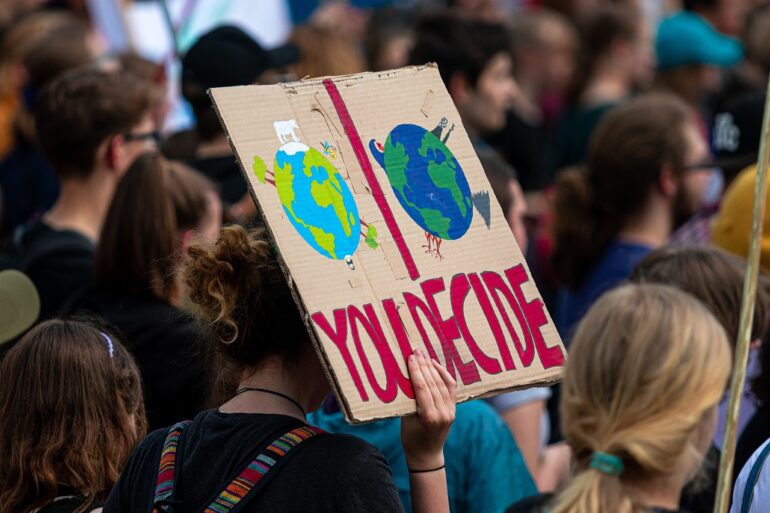Whether or not people choose to attend a climate protest partly depends on its expected size. When they expect a larger protest, they are less likely to take part—as Universität Hamburg’s Cluster of Excellence for climate research (CLICCS) shows in a publication in the journal Nature Climate Change.
Mass protests are an important motivator for politicians to implement ambitious climate policy. But what determines whether a protest movement grows or dwindles? The study at hand uses the example of the global climate strike from 2019 to show that, for many people in Germany, their participation depends on how many people they expect to attend a given demonstration. Accordingly, Fridays for Future’s strategy—organizing multiple local protests at the same time, instead of one massive centralized event—can successfully motivate more people.
On the basis of a three-stage survey involving more than 1,500 respondents, Dr. Johannes Jarke-Neuert, who works in Jülich and formerly in Hamburg, and his Hamburg colleagues Prof. Grischa Perino and Henrike Schwickertwere able to show for the first time the connection between the expected number of demonstrators and the willingness to personally join in. “When the demonstrations are larger, for some people the ‘costs’ of attending apparently outweigh the benefits,” says Grischa Perino, a Professor of Economics at Universität Hamburg.
If my concern is represented sufficiently, I do not necessarily go there myself anymore
For example, some people feel uncomfortable in large crowds, or don’t want to travel to protests because of the likely overfilled trains. “If, in addition, they anticipate that the protest will be large enough to create awareness for their interests whether they take part or not, many choose to just stay home,” says Perino. “These so-called free-riders also play a measurable part in the climate movement. They let others do the work but reap the benefits.”
In the fall of 2019, adults were expressly invited to join in climate protests for the first time. The protests took place simultaneously in several cities across the country. The study discussed here was conducted in Berlin, Hamburg, Cologne and Munich, where larger demonstrations were expected.
Willingness to join in for medium-sized demos higher than for large ones
The survey respondents were aged 18 to 75 and came from all walks of life; unlike in other studies, they were not explicitly climate protest supporters. In advance, they were asked to estimate what percentage of those surveyed would attend the climate strike in their own city, and to state whether or not they were personally likely to join in; roughly a quarter of them said they likely would.
In a second survey, shortly before the demonstration, this result was shared with part of the group; a control group did not receive this information. Both groups were given the opportunity to adjust their estimates of the overall participation rate. In this way, the expectations concerning the size of the local demonstration were changed for a randomly selected part of the respondents, allowing to cleanly separate their effect on the choice of whether or not to participate from other factors like political views. In a third survey, conducted after the climate strike, all respondents were asked whether or not they had actually taken part.
A comparison of the groups revealed that those respondents who had raised their initial estimates after receiving the information were significantly less likely to attend than those from the control group, who received no additional information. In contrast, those who had lowered their initial estimates were more likely to attend.
These findings underscore that the strategy used by Fridays for Future—namely, organizing multiple, smaller and decentralized protests throughout Germany—ultimately helps to motivate as many people as possible. They also lead to a practical insight: “Before a protest, the team organizing it should be careful not to exaggerate the predicted number of participants,” says Grischa Perino.
Doing so could deter those people who are more likely to take part in medium-sized demonstrations than in large ones. The study’s findings improve our grasp of how societies are responding to the challenges posed by climate change, and which future developments are plausible—one of the central goals of the Cluster of Excellence CLICCS.
More information:
Johannes Jarke-Neuert et al, Free riding in climate protests, Nature Climate Change (2023). DOI: 10.1038/s41558-023-01833-y
Provided by
Forschungszentrum Juelich
Citation:
Participation in climate protests partly depends on expected size, study finds (2023, October 10)
